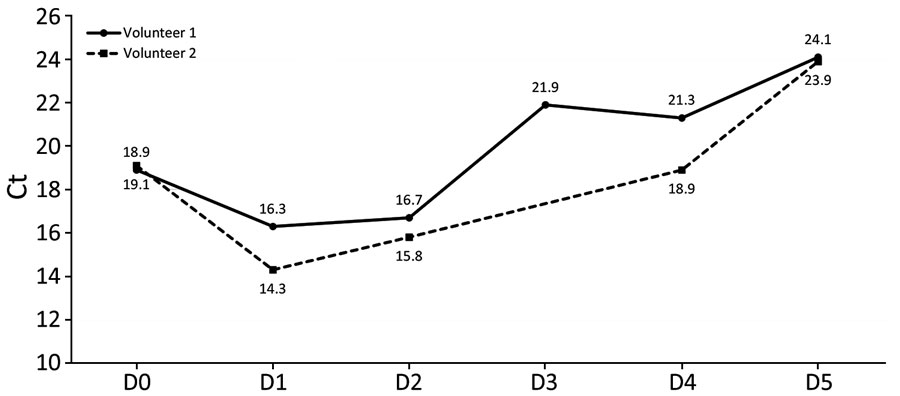Volume 29, Number 3—March 2023
Research
Using Discarded Facial Tissues to Monitor and Diagnose Viral Respiratory Infections
Figure 4

Figure 4. Ct values obtained from used facial tissues collected each morning after the first day from 2 volunteers in study of using facial tissues to monitor and diagnose viral respiratory infection. Volunteer 1 (closed circle, solid line) and volunteer 2 (closed square, dotted line) provided tissues every morning for 5 days (except day 3 for volunteer 2). Each tissue was analyzed as described, and SARS-CoV-2 RNA was detected using an Alinity assay (Abbott, https://www.corelaboratory.abbott). Day 0, the day of COVID-19 diagnosis performed on a typical nasal swab sample. Ct, cycle threshold.
Page created: January 12, 2023
Page updated: February 19, 2023
Page reviewed: February 19, 2023
The conclusions, findings, and opinions expressed by authors contributing to this journal do not necessarily reflect the official position of the U.S. Department of Health and Human Services, the Public Health Service, the Centers for Disease Control and Prevention, or the authors' affiliated institutions. Use of trade names is for identification only and does not imply endorsement by any of the groups named above.